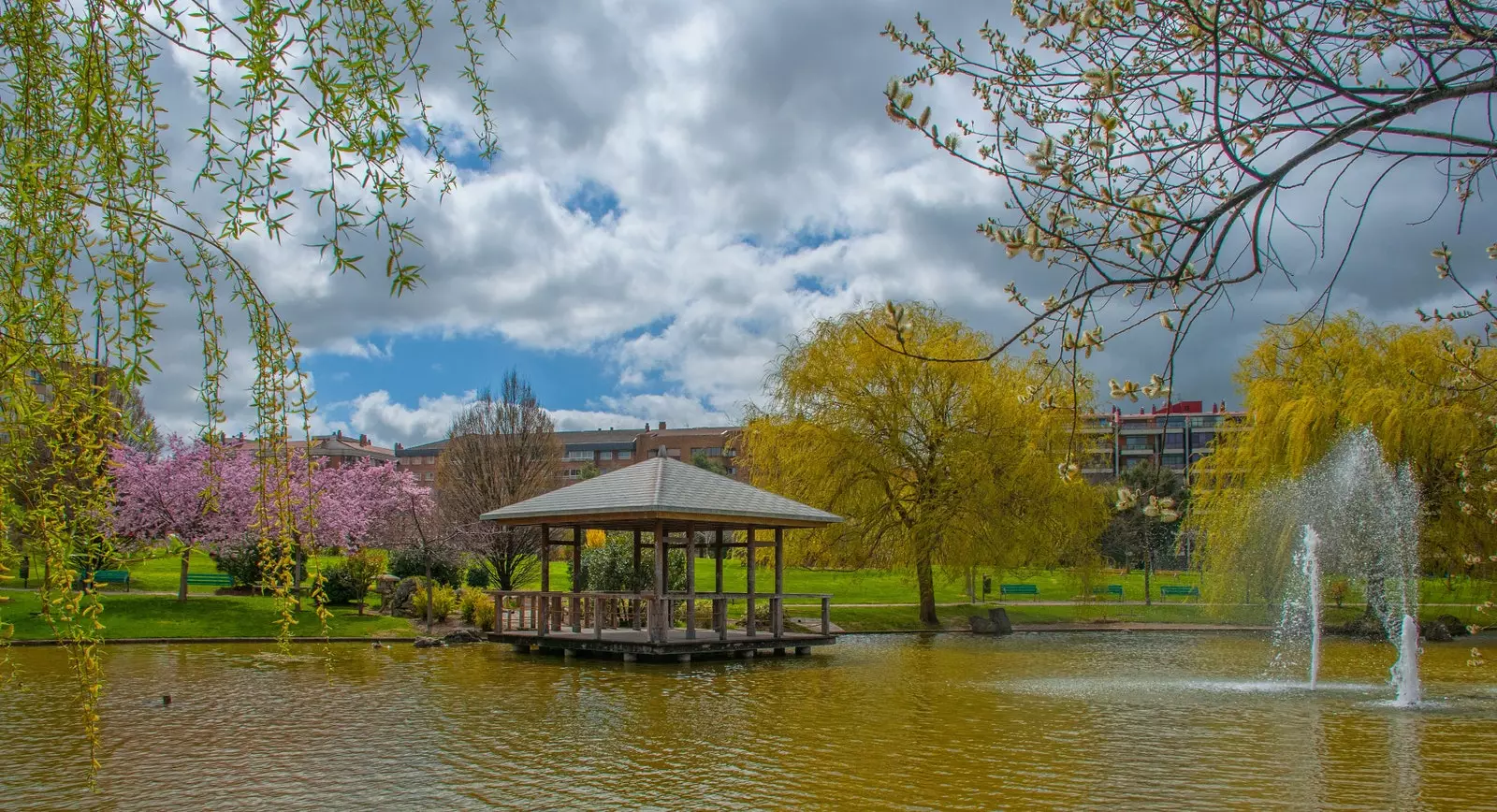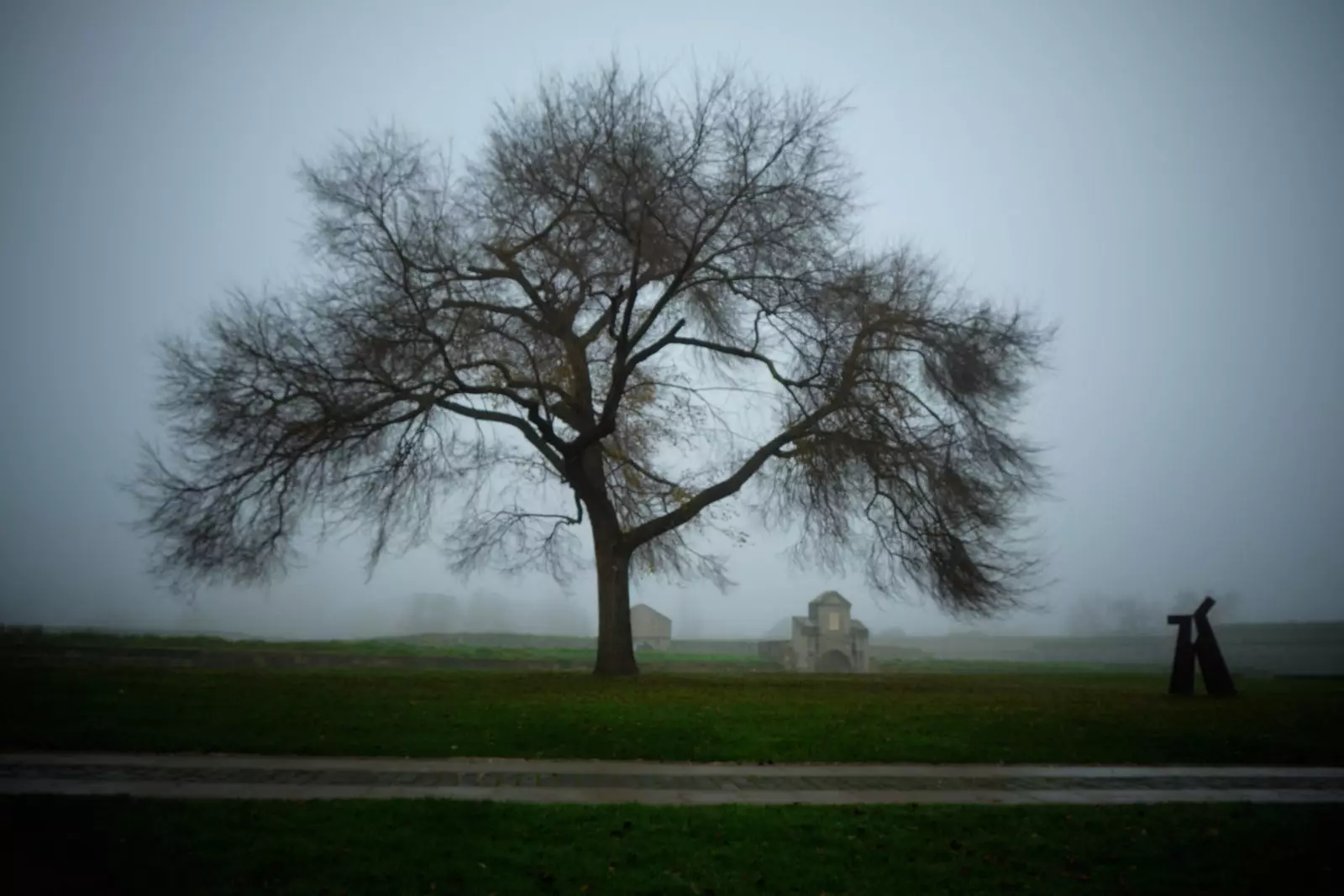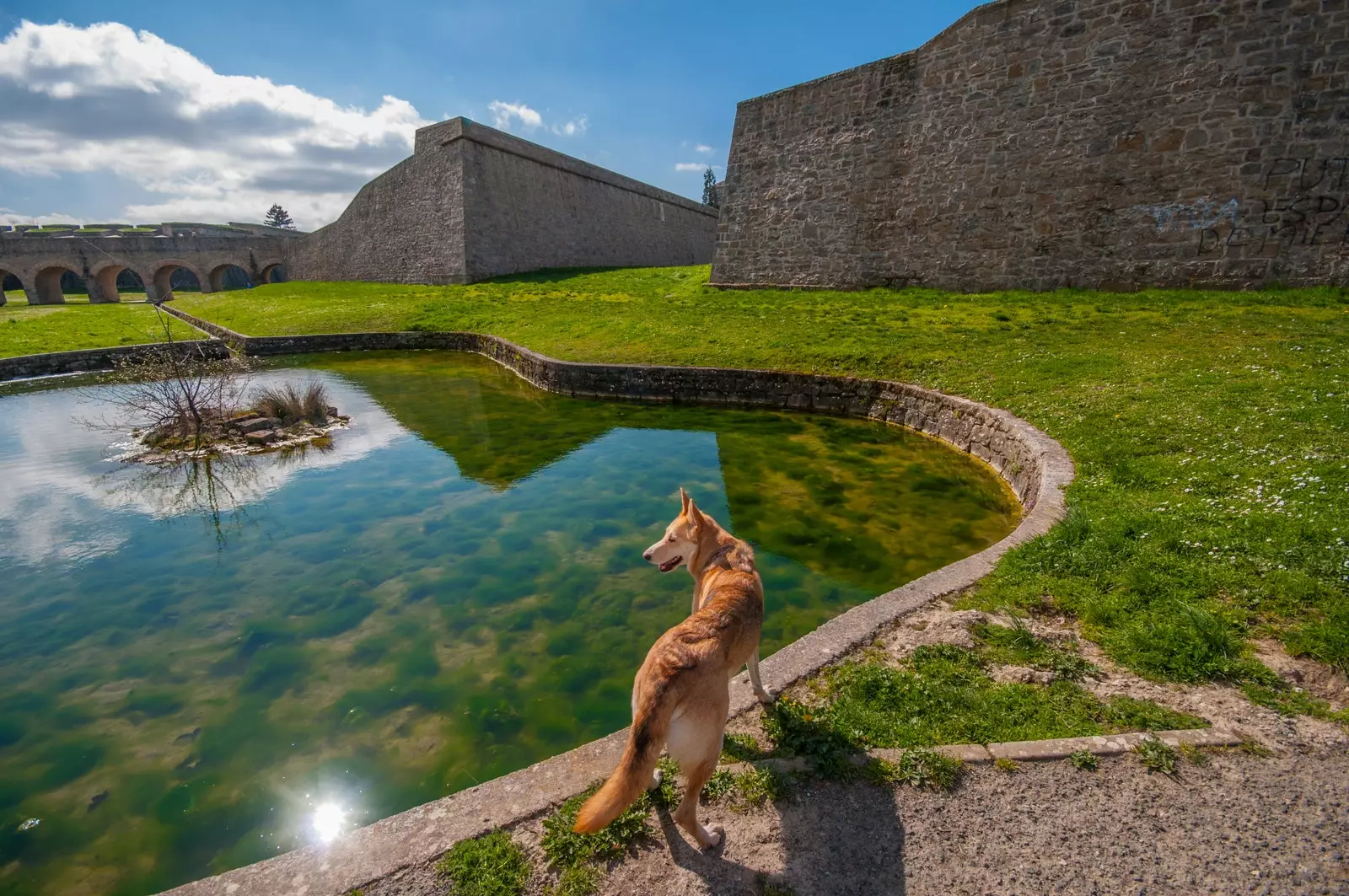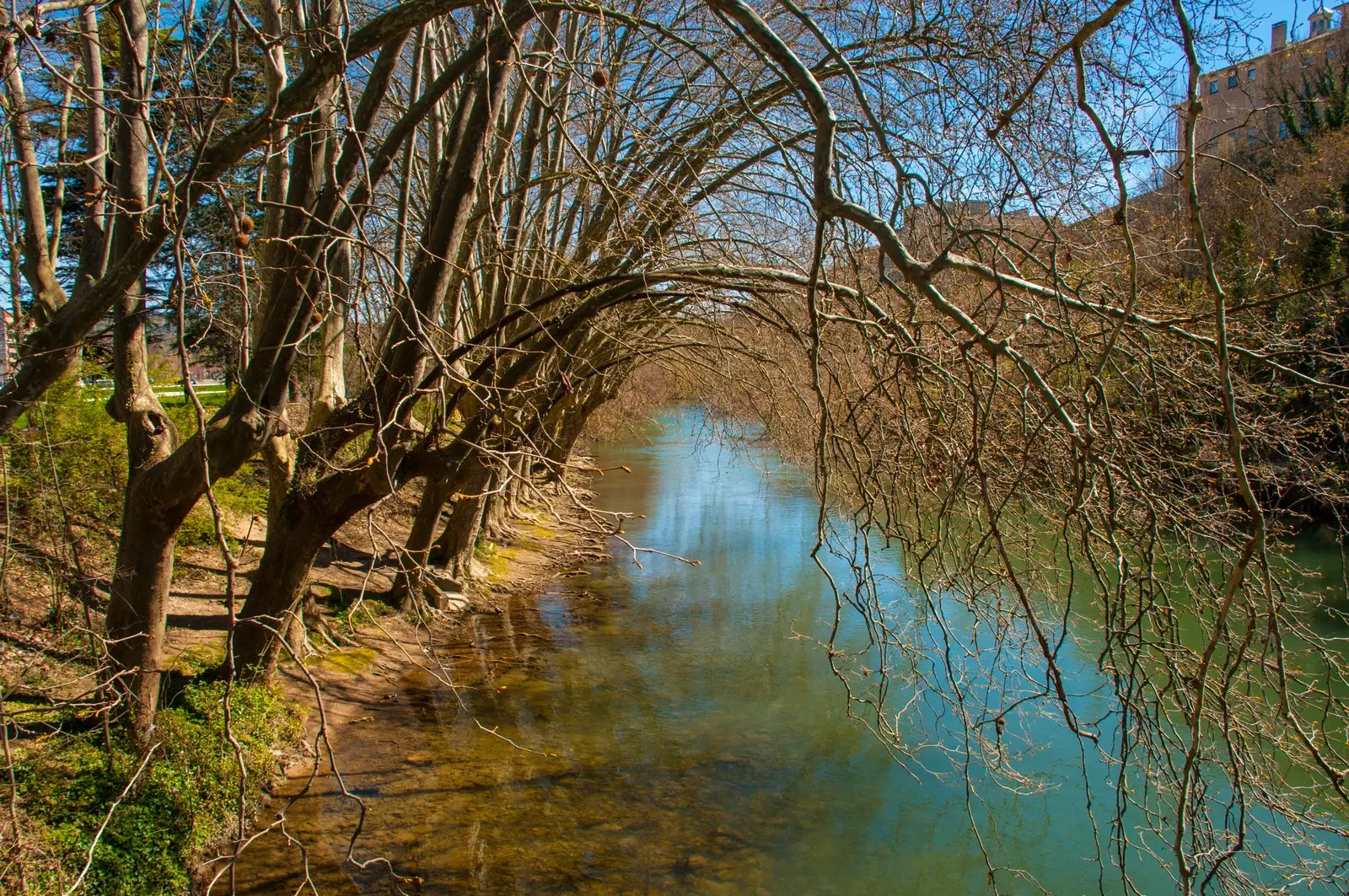
Yamaguchi Park, in Pamplona.
People from Pamplona walk the dog an old military fortification taken over by grass, and peer out to watch the ducks and deer that live in what was once a defensive moat.
Pamplona is the fourth greenest city in the country, with 2.42 km² of surface dedicated to fauna and flora. That means that there is 12.29 m² of urban nature for every inhabitant. From the old quarter to the outskirts, the Navarran capital is a melting pot of parks and gardens, all of them worth mentioning.

The turn of the Castle under a dense fog
THE CITADEL AND THE BACK OF THE CASTLE: A FORTRESS WHERE TREES GROW
Between the 16th and 17th centuries a citadel was built to protect Pamplona from external threats, but over the decades This Renaissance construction lost its military function and allowed itself to be invaded by vegetation.
The moats and glacis have been transformed into walled meadows where bastions and ravelins remain standing and coexist with sculptures from the 80s and 90s. Art exhibitions and cultural activities are held in the old pavilions, since the fortified enclosure is the headquarters of the Hiriartea Center for Contemporary Culture.
LA TACONERA GARDENS: THIS VERSALLES HAS A MOAT FULL OF ANIMALS
The oldest park in Pamplona is a romantic and stately place inspired by the belle époque and located around the wall. The French-style gardens, laid out in 1830, are home to beech, magnolia and a 130-foot sequoia.
Centuries ago this Versailles garden was used to defend the northwest area of Pamplona. That is why the San Roque ravelin is still here, and the moat is now a zoo inhabited by deer, goats, rabbits, ducks, swans and peacocks.
Inside are the Café Vienés, formerly a bike rental kiosk , and the statue of the Mariblanca, an allegory of abundance that is very popular in the city.
Its most elegant access is the Portal of San Nicolás, baroque recreation of a triumphal arch built in 1660. You can also enter through the Portal de la Rochapea or the Portal Nuevo, and admire the views from above.

People from Pamplona walk their dogs through a piece of history.
LA MEDIA LUNA: THE ROMANTIC CORNER OF THE HEIGHTS
The other belle époque park in the Navarran capital it is named like this because of its layout in the shape of a waning moon . From here you can see the meanders of the Arga, the cathedral and the medieval bridge of La Magdalena. But the panoramic view is not its only attraction, since in these gardens there is a pond with fish, pergolas, arches, trees that touch the sky and another vestige of the wall: the Fort of San Bartolomé.
ARGA FLUVIAL PARK: THE RIVER WHERE THE CITY OVERFLOWS
The Arga River is a natural setting designed to spend a country day without leaving Pamplona. Native species, such as the otter and the beaver, have reappropriated both riverbanks, connected by the historic bridges of Magdalena, Rochapea, Santa Engracia and San Pedro, the oldest in the city.
Near the water is also the Caballo Blanco, the highest point of the Redín bastion, offering spectacular views.
The park runs along the river and extends 30 kilometers. Along the way there are fountains, mills, dams, footbridges, lakes and even an old restored mill. The route leaves Pamplona and crosses towns such as Burlada, Villava and Arre.

Arga River Park
YAMAGUCHI: THE PAMPLONESE DOOR TO JAPAN
Two Japanese landscapers transformed an industrial site into a living tribute to the four seasons, and they named it after the Japanese city that is twinned with Pamplona: Yamaguchi.
The park houses the typical elements of a Japanese garden: suhama (sand and stone beach), taki (waterfall), azumaya (hut over the pond), yatsubashi (wooden bridge) and ishibasi (stone bridge) and a geyser in the lake that reaches 20 meters in height.
It is a place for admire the beauty and elegance of oriental vegetation (Japanese cherry, ginkgo biloba, weeping willow...) and surrender to meditation.
GARDEN OF THE GALAXY: A SCALE REPLICA OF THE MILKY WAY
In the same Yamaguchi park fits an entire galaxy. Not far from the Japanese nook extends a vegetable replica of the Milky Way: + hundreds of bushes recreate galactic stars and nebulae, and even its black hole. It is made to scale, so that its 30 meters in diameter is equivalent to 100,000 light years . The Planetarium of the city is next door, also inside the park itself.
MORE GREEN PLACES TO EXPLORE IN PAMPLONA
Nature is the true protagonist of Pamplona. It is present in the center and on the outskirts, dominating historic and modern spaces with ease. In this city the difficult thing is not to run into a green lung.
They are in the gardens of the Public University of Navarra –with a hundred species of trees originating from the five continents– and in spaces with suggestive names such as Parque de los Aromas, La Biurdana, Larraina and Huerto Aranzadi. The best thing is to visit them and succumb to their charms.
